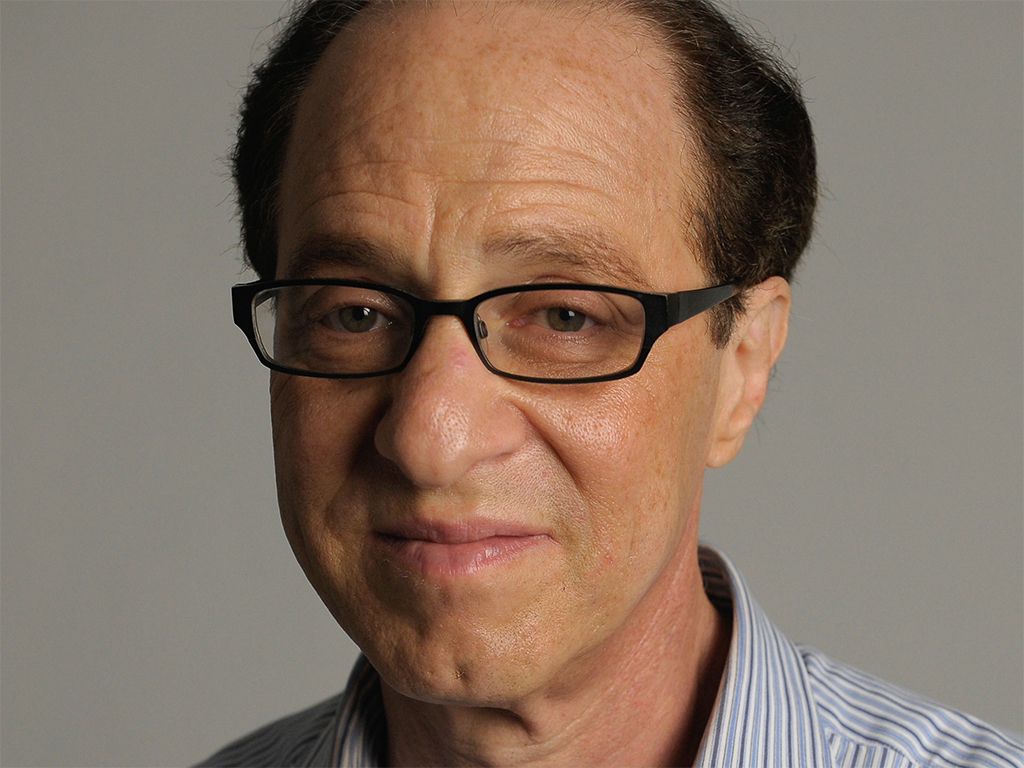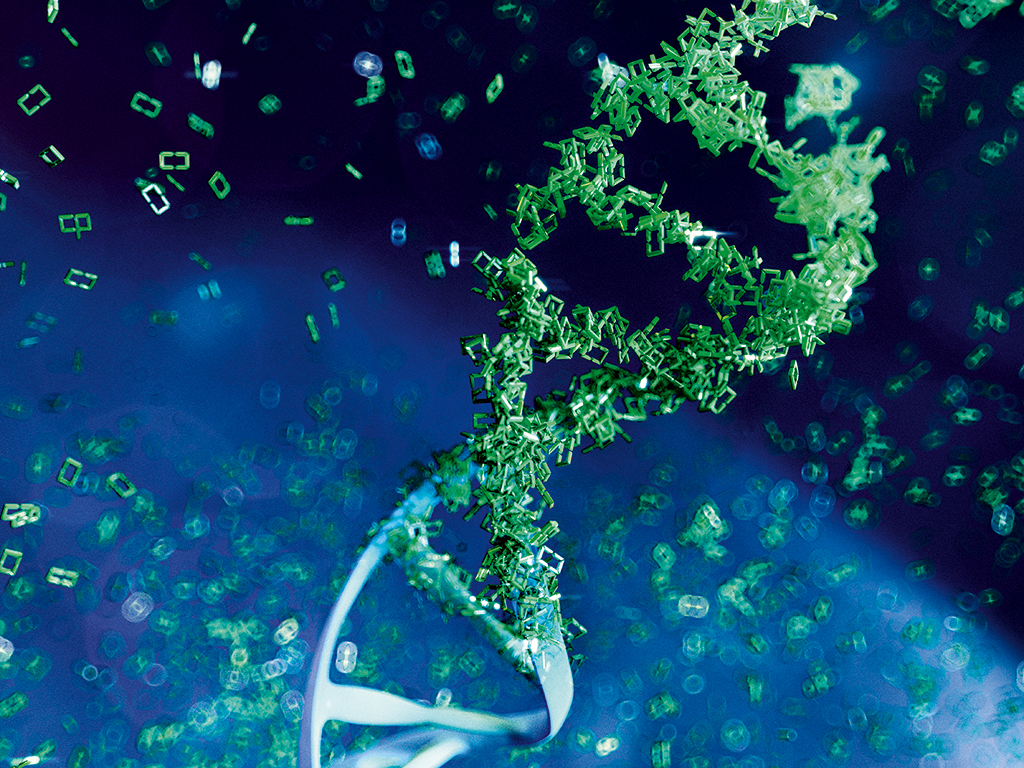Google genius Ray Kurzweil predicts the future of technology
A lifetime dedicated to innovation has led to Ray Kurzweil being heralded as one of the US’ greatest pioneers – by those in the know, at least

Ray Kurzweil, Director of Engineering at Google, has been hailed as "the rightful heir to Thomas Edison". Kurzweil's ability to predict future technologies, and his own groundbreaking inventions, have amazed the world
Given that he’s been hailed as one of the greatest innovators of the last 50 years, it’s not hard to see why Google snapped up Ray Kurzweil’s services in 2012. A pioneering thinker since the 1970s, he has accurately predicted – despite derision at times – many of the technologies that people take for granted today.
Inc. magazine dubbed Kurzweil “the rightful heir to Thomas Edison”, while PBS described him as one of the 30 innovators that “created America”. Such gushing praise might seem over the top for someone who hasn’t enjoyed the same household recognition as many of his contemporaries, but those who know of his contributions to society hold Kurzweil in an extremely high regard. While the likes of Bill Gates and Steve Jobs have rightfully taken home the plaudits – and riches – for their own innovations, Kurzweil has preferred to stand outside the spotlight.
Kurzweil’s predictions have been varied and impressively accurate. In the 1980s, he suggested the internet would be a central part of people’s lives, even though it was just a niche technology at the time. He also predicted computers would be capable of defeating humans at chess shortly before Garry Kasparov, the world chess champion, was beaten by a computer designed by IBM.
Kurzweil’s predictions have been varied and impressively accurate
But it hasn’t all been talk: Kurzweil is also an extraordinarily successful inventor in a wide range of fields. He has pioneered hugely successful new technologies in health, speech recognition, artificial intelligence, and even music.
Kurzweil has been the recipient of a number of awards, including the $500,000 MIT-Lemelson Prize (considered the top honour in the world for innovators) in 2001. In 1999, he received the US’ highest technology honour, the National Medal of Technology and Innovation, from President Bill Clinton. In 2002, he joined the likes of Guglielmo Marconi, Edison, Jobs and Nikola Tesla when the US Patent Office inducted him into the National Inventors Hall of Fame. Over the course of his career he has received 20 honorary doctorates in recognition of his incredible contribution and inspiring dedication to innovation.
Early starter
Born in 1948, Kurzweil was raised in New York City by Jewish parents who had fled Austria shortly before the Second World War. An enthusiastic reader of science fiction, he would spend his days at school focusing on his own projects instead of studying. Heavily influenced by an uncle who worked as an engineer at research centre Bell Labs, he began to learn computer science in his early teens.
Kurzweil went on to study at MIT, gaining a bachelorship in computer science and literature in 1970. At the same time, he formed a company that used a computer programme to match high school students with relevant colleges. It was such a success that he soon sold the company to Harcourt, Brace & World for $100,000 (more than $600,000 in today’s money).
By 1974, he had founded Kurzweil Computer Products, which led the development of the first scanner. His work also led to great advances for blind people, with the invention of the first print-to-speech reading machine and the first text-to-speech synthesiser, as well as the first computer program capable of recognising written text. A commercial version of the scanning program was later released, which proved hugely popular and led to the company being bought out by Lernout & Hauspie. The new owners were later subsumed into Xerox and are now well known as Nuance Communications.
A meeting with legendary musician Stevie Wonder inspired Kurzweil’s next big project. Wonder, blind since birth, had complained about the disparity of capabilities between electronic synthesisers and traditional musical instruments. This inspired Kurzweil to devise a new synthesiser, the Kurzweil K250, as part of his latest business, Kurzweil Music Systems. The synthesiser accurately mimicked sounds of traditional instruments, from grand pianos to the string section of an orchestra, and an array of effects. It became an iconic instrument used by musicians from many genres.
[T]echnological progress will be so rapid that humans won’t be able to understand it, resulting in people altering their minds and bodies
While revolutionising musical instruments, Kurzweil had also formed Kurzweil Applied Intelligence. The new company specialised in developing speech recognition programs, with the first product launched in 1987. During the 1990s, Kurzweil dedicated more of his time to educational pursuits and developing technologies that would aid schoolchildren with disabilities such as dyslexia, blindness and attention deficit disorder. He founded the Medical Learning Company during this period, which created software that allowed doctors to practice on computer-simulated patients.
Predicting the future
Kurzweil is famed for his optimistic outlook on the future and fervent belief that science and technology will help solve some of the greatest troubles affecting mankind. His book The Singularity is Near, published in 2005, documents his beliefs regarding artificial intelligence. It describes his concept of ‘the law of accelerating returns’, which predicts technologies will continue to advance at a greater speed over the coming years, reaching a ‘technological singularity’ around 2045. At that point, technological progress will be so rapid that humans won’t be able to understand it, resulting in people altering their minds and bodies with nanotechnologies, genetic enhancements and artificial intelligence.
While primarily focused on developing advanced ways of harnessing the vast amount of data the company possesses, Kurzweil’s work at Google will ultimately free him to think big. Google prides itself on its commitment to innovation, and this will allow one of the US’ most remarkable thinkers to put his mind to developing the technologies that will dominate life long after he is gone.
Kurzweil’s predictions for the future:
1. Solar energy

Solving the global energy crisis and weaning countries off fossil fuels has become the mission of many scientists concerned with the state of the climate, but finding a sustainable and efficient alternative that doesn’t require government subsidies has proven difficult. Kurzweil recently told CNN: “By 2030, solar energy will have the capacity to meet all of our energy needs. The production of food and clean water will also be revolutionised. If we could capture one part in 10,000 of the sunlight that falls on the Earth, we could meet 100 percent of our energy needs, using this renewable and environmentally friendly source. As we apply new molecular scale technologies to solar panels, the cost per watt is coming down rapidly… The total number of watts of electricity produced by solar energy is growing exponentially, doubling every two years. It is now less than seven doublings from 100 percent.”
2. Vertical farming

Feeding the world is going to become increasingly difficult as the global population continues to soar. While land is too scarce for the sort of agriculture necessary, Kurzweil thinks we will soon see a smarter, more efficient way of providing food for the masses. Speaking to The Times, he said: “There will be a new vertical agriculture revolution, because right now we use up a third of the usable land of the world to produce food, which is very inefficient. Instead we will grow food in a computerised vertical factory building – which is a more efficient use of real estate – controlled by artificial intelligence, which recycles all of the nutrients so there’s no environmental impact at all. This would include hydroponic plants, fruits and vegetables, and in vitro cloning of meat. This could also be very healthy – we could have meat with omega-3 fats instead of saturated fats, this sort of thing.” However, sceptics have been vociferous in expressing their belief that vertical farms are unrealistic. Green campaigner and writer George Monbiot recently pointed out that the difficulties in getting sun onto indoor crops, along with the cost of providing artificial light, would negate any benefits from such farms.
3. Extending life

Revolutionising medicine and public health is a goal of scientists worldwide, with new discoveries constantly being made. Kurzweil believes technology will soon allow the effects of ageing to be slowed. He told CNN: “Up until recently, health and medicine was basically a hit-or-miss affair. We would discover interventions such as drugs that had benefits, but also many side effects. Until recently, we did not have the means to actually design interventions on computers. All of that has now changed, and will dramatically change clinical practice by the early 2020s. We now have the information code of the genome and are making exponential gains in modelling and simulating the information processes they give rise to.” Speaking to The Times, Kurzweil added there are three key stages to extending life: staying healthy today, improving biotechnology, and the forthcoming nanotechnology revolution. “20 years from now, we will be adding more time than is going by to your remaining life expectancy. We’ve quadrupled life expectancy in the past 1,000 years and doubled it in the past 200 years. We’re now able to reprogram health and medicine as software, and so that pace is only going to continue to accelerate.”
4. 3D printing

Although 3D printing has been discussed at great length in recent years, Kurzweil cannot stress enough just how transformative the technology will soon be. He describes the world as being on the cusp of a “golden era of 3D printing”. He said: “3D printing is getting a lot of attention. There are niche applications such as printing our replacement parts for machinery, but the opportunity to begin replacing significant portions of manufacturing is still about five years away. If we look at the life cycle of technologies, we see an early period of over-enthusiasm, then a ‘bust’ when disillusionment sets in, followed by the real revolution. Remember the internet boom of the 1990s followed by the internet bust around the year 2000? That was around the time Google was getting started, and now we have multi-hundred billion-dollar internet companies. We’re in the early boom phase of 3D printing enthusiasm and hopefully we’ve learned enough to avoid a period of undue disillusionment, but I do see the early 2020s as the golden era of 3D printing. For example, in the early 2020s, you’ll have a choice of many thousands of cool clothing designs that are open source and that can be printed out for pennies a pound.”













